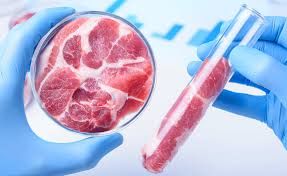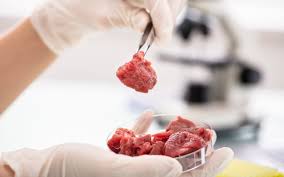
Lab-grown meat might be about to get a lot cheaper to produce thanks to a new technique developed by researchers at Tufts University Center for Cellular Agriculture (TUCCA).
A team of researchers from Tufts University Center for Cellular Agriculture (TUCCA) may have found an innovative way to promote cellular growth for cellular agriculture.
The findings could help dramatically slash the cost of the process, ultimately making it more commercially viable at scale.
Cheaper cellular agriculture
Cellular agriculture produces meat by growing animal cells in bioreactors rather than from actual farm animals.
Recent technological advancements have made this process more feasible for the food industry. Growth factors are used in laboratory experiments or for cultivated meat to help cells grow and differentiate into different types of mature cells.
In a new study, researchers developed stem cells that produce their fibroblast growth factor (FGF), which triggers the growth of skeletal muscle cells, the type of cells found in steak or hamburgers.

“FGF is not exactly a nutrient,” said Andrew Stout, then lead researcher on the project and now Director of Science at Tufts Cellular Agriculture Commercialization Lab. “It’s more like an instruction for the cells to behave in a certain way. What we did was engineer bovine muscle stem cells to produce these growth factors and turn on the signaling pathways themselves.”
Previously, when producing cultivated meat, growth factors were added to the surrounding liquid or media. These growth factors are made from recombinant proteins and are sold by industrial suppliers. However, they are very expensive and can contribute up to or more than 90 percent of the production cost.
Since the growth factors have a short lifespan in the cell culture media, they must be replenished every few days. This limits the ability to provide an affordable product to consumers. However, significant cost savings can be achieved by removing the growth factors from the growth media.
Although, the new technique could change all that.

“While we significantly cut the cost of media, there is still some optimization that needs to be done to make it industry-ready,” said Stout. “We did see slower growth with the engineered cells, but I think we can overcome that.”
One potential strategy is to modify the cell’s expression of FGF, either in terms of timing or level or to alter other pathways related to cell growth.
The team’s strategy involves editing and expressing genes already in muscle cells. Their technique doesn’t add foreign genes, instead, it aims to enhance cell growth for meat production, with a stricter approach than adding foreign genes.
This approach could simplify the regulatory approval process for the final food product because regulations are stricter for adding foreign genes than editing native genes.

Stout believes that using FGF to grow meat can be applied to other types of meat, such as chicken, pork, or fish. Almost all muscle cells and other cell types depend on FGF for growth. However, the best growth factors to use may vary for different species.
And improved quality
“Work is continuing at TUCCA and elsewhere to improve cultivated meat technology,” said Stout, “including exploring ways to reduce the cost of nutrients in the growth media and improving the texture, taste, and nutritional content of the meat.”
“Products have already been awarded regulatory approval for consumption in the U.S. and globally, although costs and availability remain limiting. I think advances like this will bring us much closer to seeing affordable cultivated meat in our local supermarkets within the next few years,” he added.

























+ There are no comments
Add yours